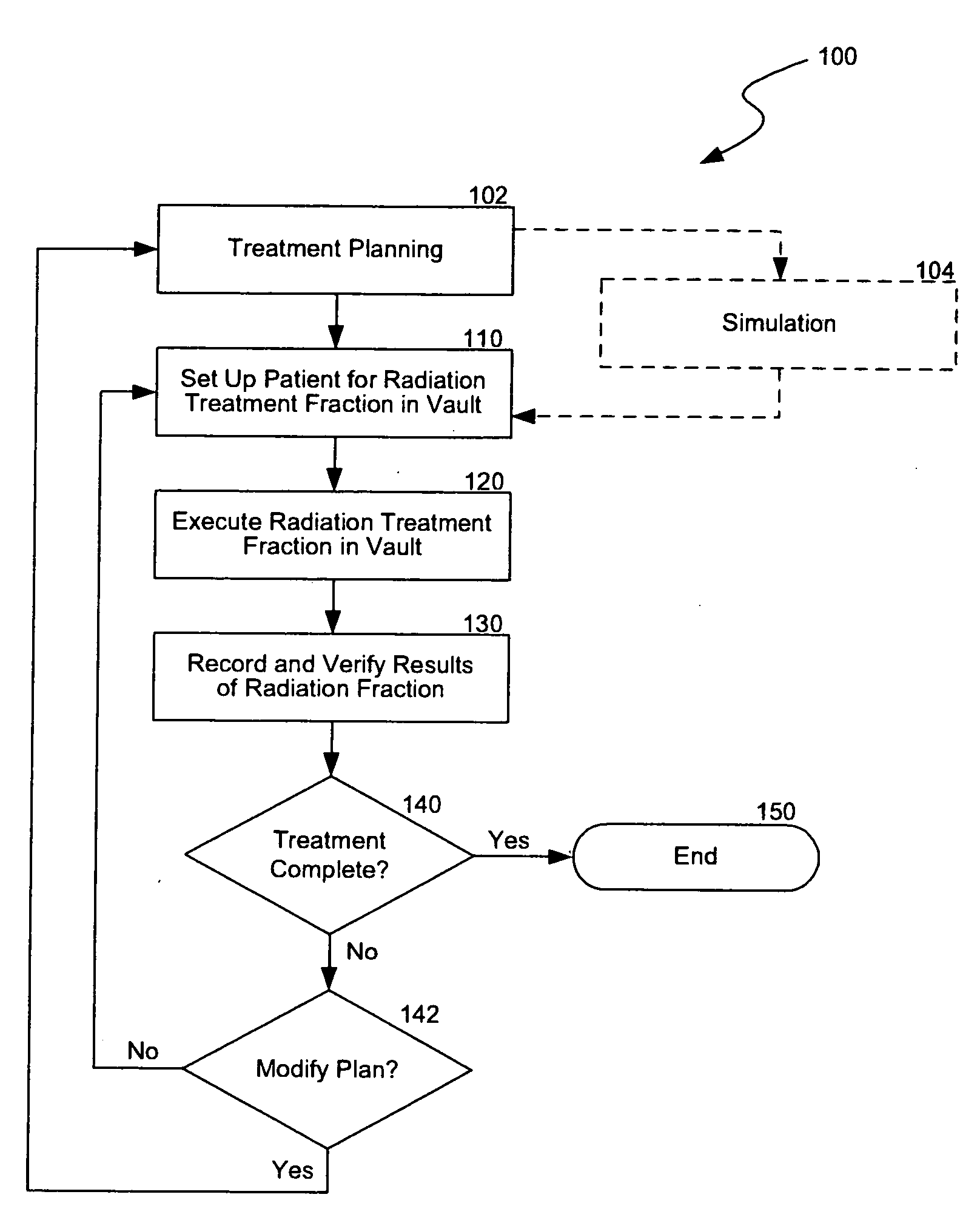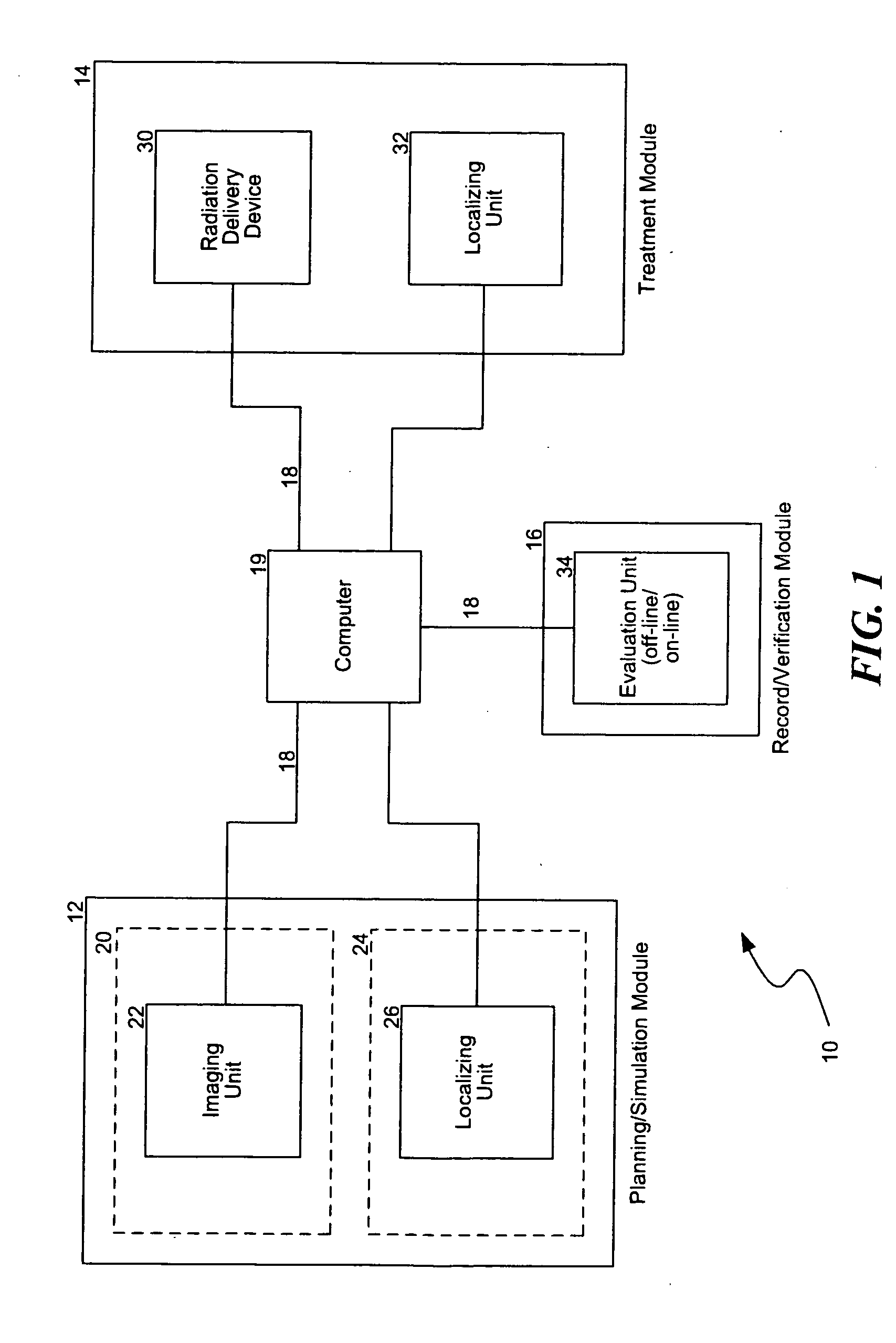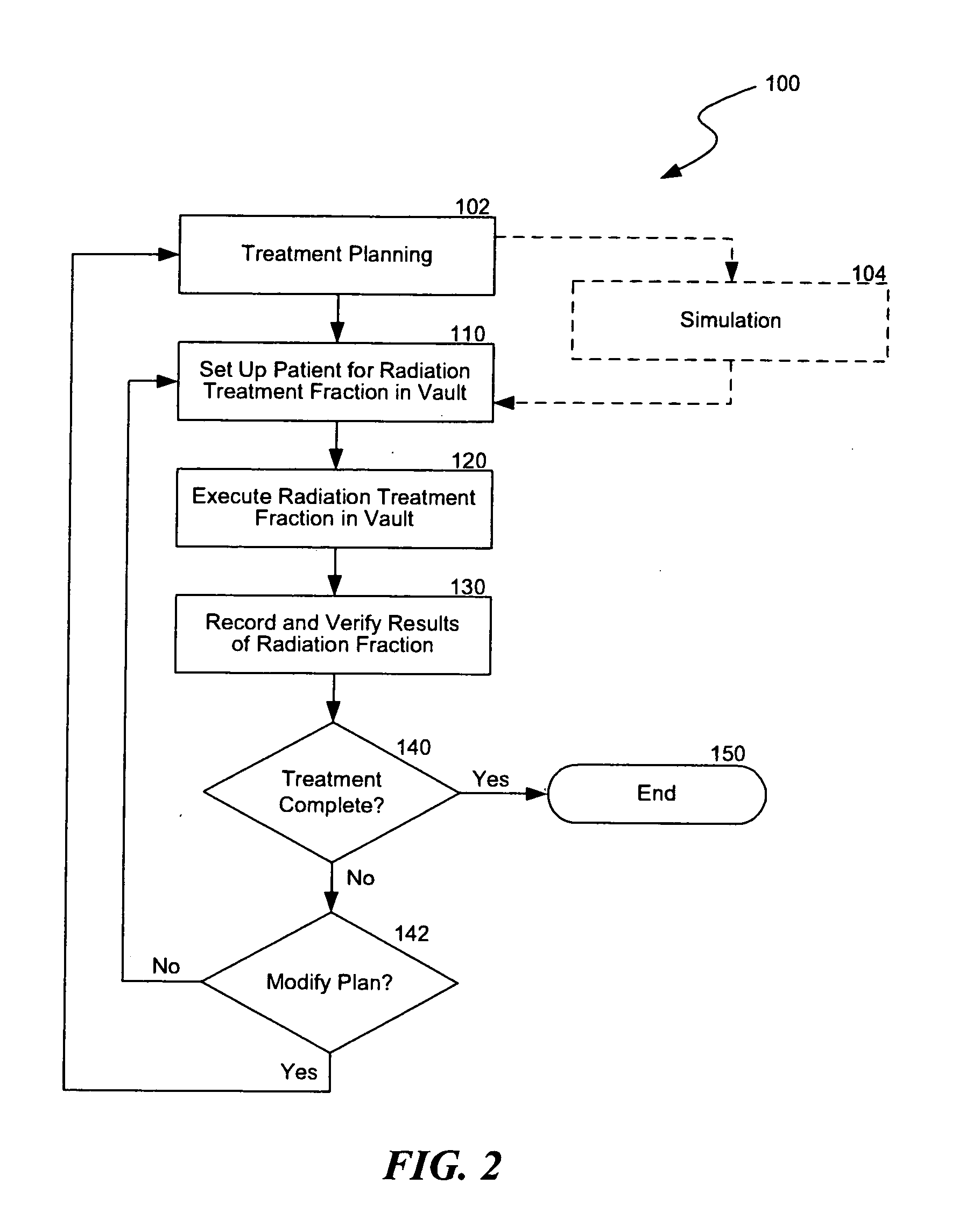Integrated radiation therapy systems and methods for treating a target in a patient
a radiation therapy and target technology, applied in the field of radiation therapy, can solve the problems of long recovery period, inability to achieve single treatment effect for all patients, and inability to achieve surgery
- Summary
- Abstract
- Description
- Claims
- Application Information
AI Technical Summary
Problems solved by technology
Method used
Image
Examples
verification procedures
F. Specific Embodiments of Treatment Management and Verification Procedures
[0067]FIG. 5 is a flow diagram illustrating a specific embodiment of the verification procedure (FIG. 2, Block 130). The verification procedure can include retrieving hardware data regarding the beam status (Block 410) and retrieving objective target data from one of the localizing units. For example, the verification procedure can include retrieving (a) the hardware data and (b) objective target data regarding the correlation between the actual location of the target and the machine isocenter (Block 412). The verification procedure further includes determining the status of the target (Block 420). In one embodiment, the status of the target is determined by correlating the hardware data with the actual location of the target at sequential time intervals of the irradiation procedure 330 (FIG. 4). The hardware data can include the beam intensity, beam position, collimator configuration, table position, accesso...
PUM
 Login to view more
Login to view more Abstract
Description
Claims
Application Information
 Login to view more
Login to view more - R&D Engineer
- R&D Manager
- IP Professional
- Industry Leading Data Capabilities
- Powerful AI technology
- Patent DNA Extraction
Browse by: Latest US Patents, China's latest patents, Technical Efficacy Thesaurus, Application Domain, Technology Topic.
© 2024 PatSnap. All rights reserved.Legal|Privacy policy|Modern Slavery Act Transparency Statement|Sitemap



